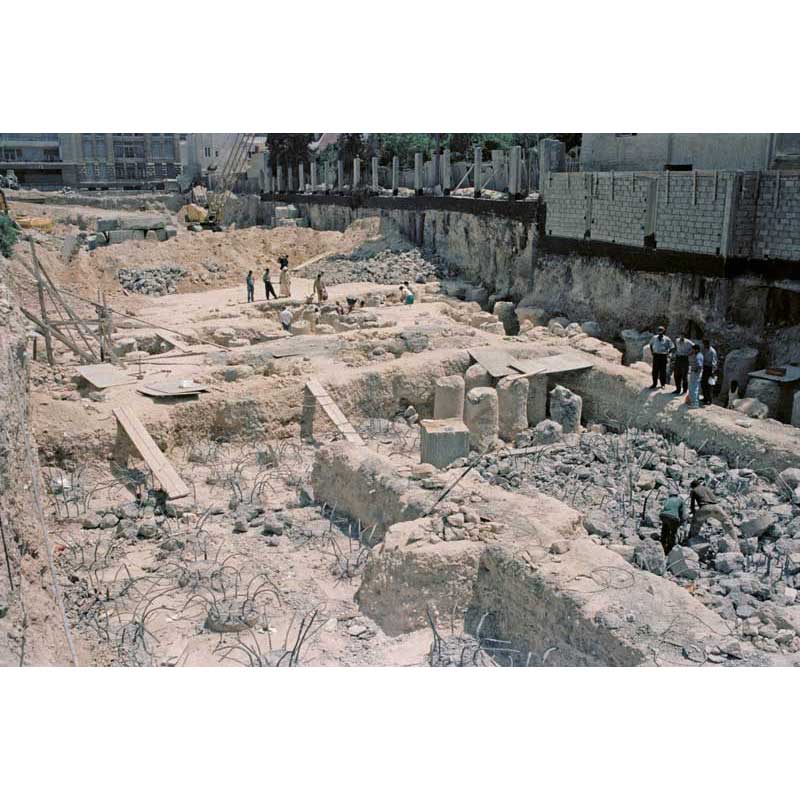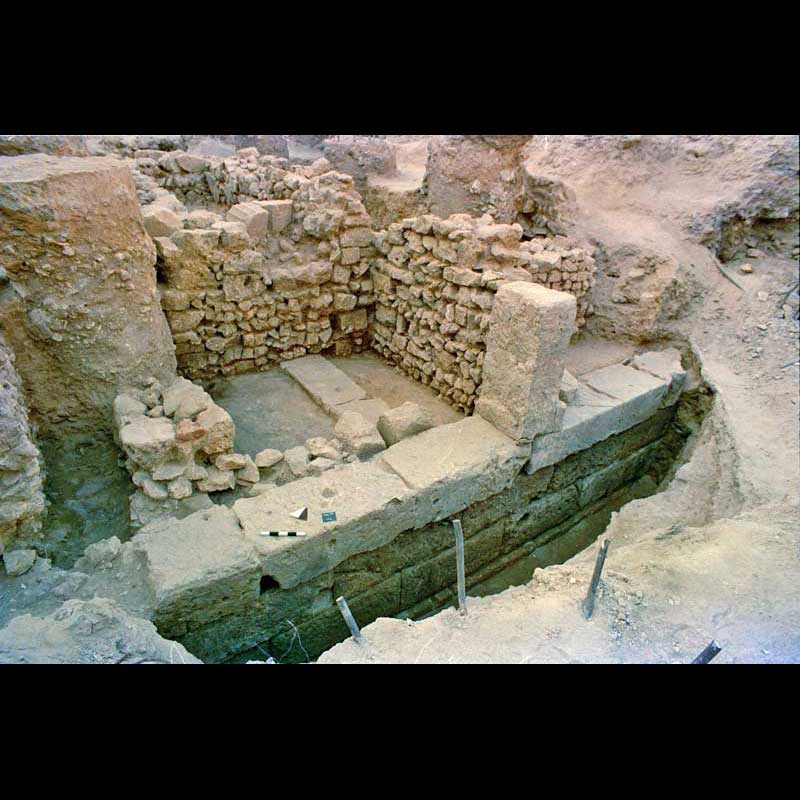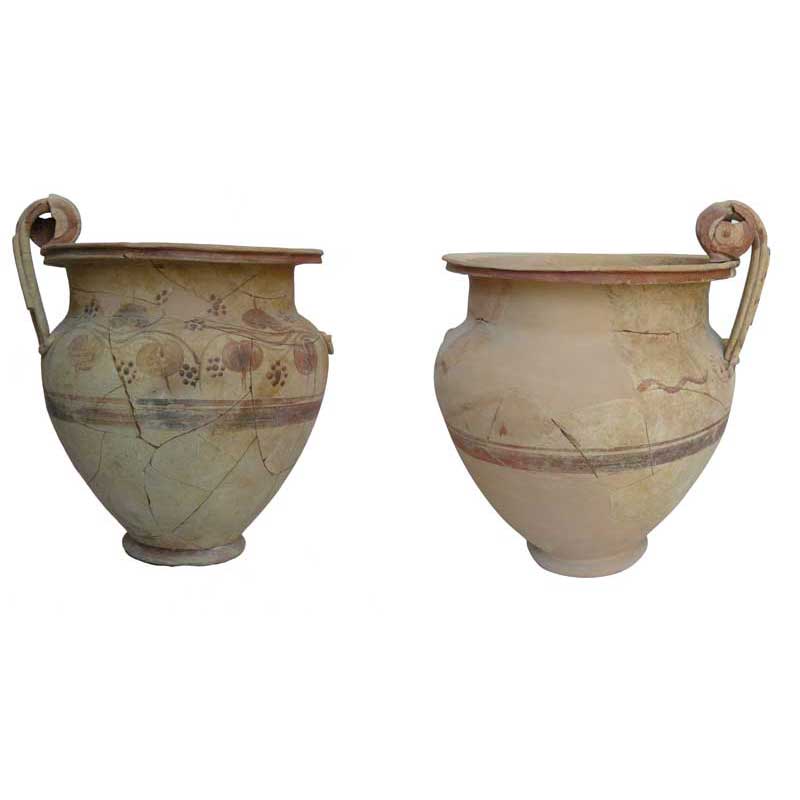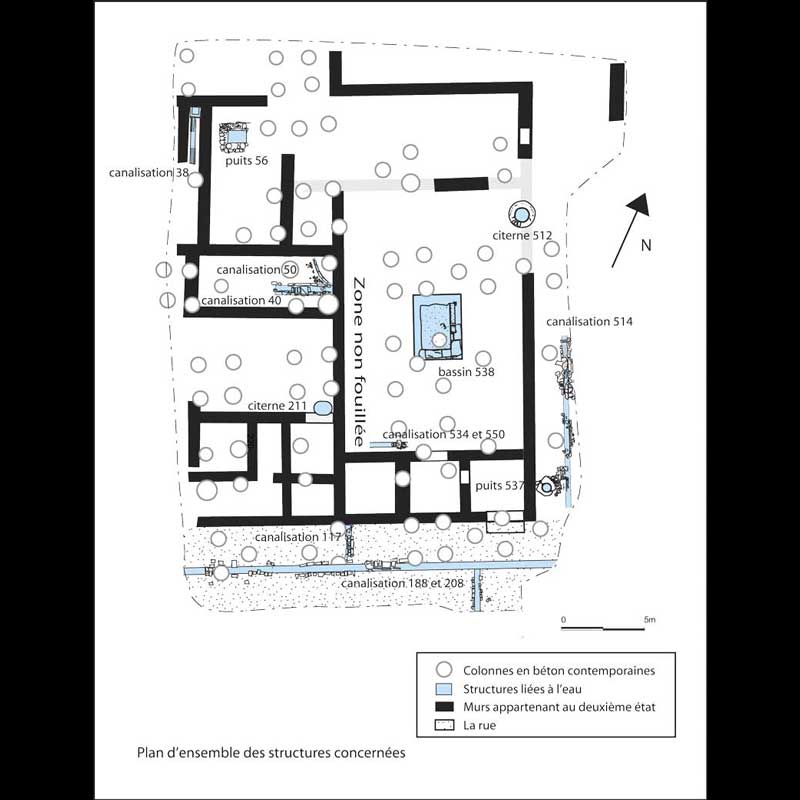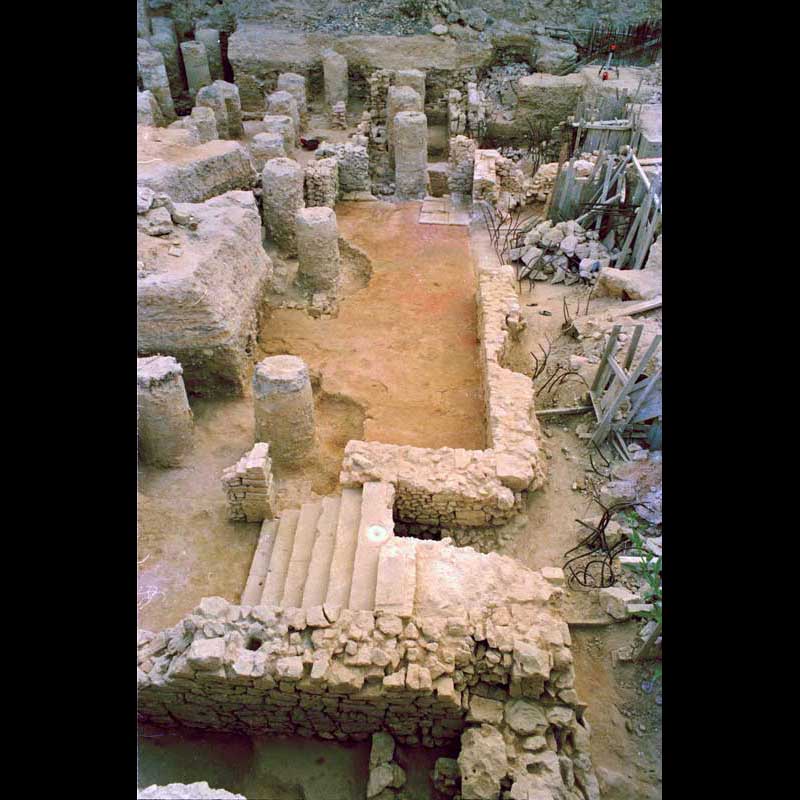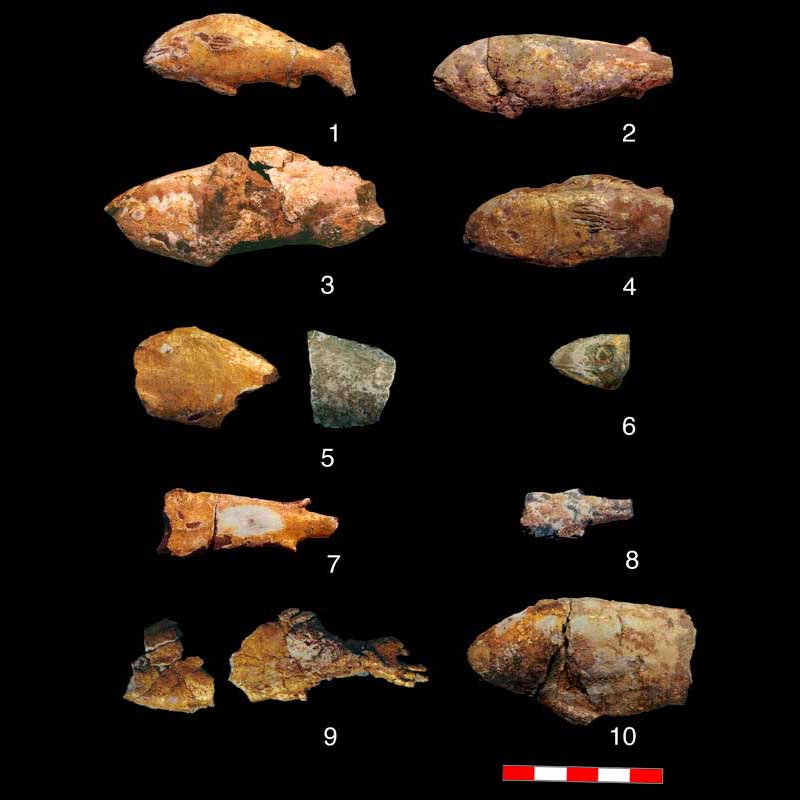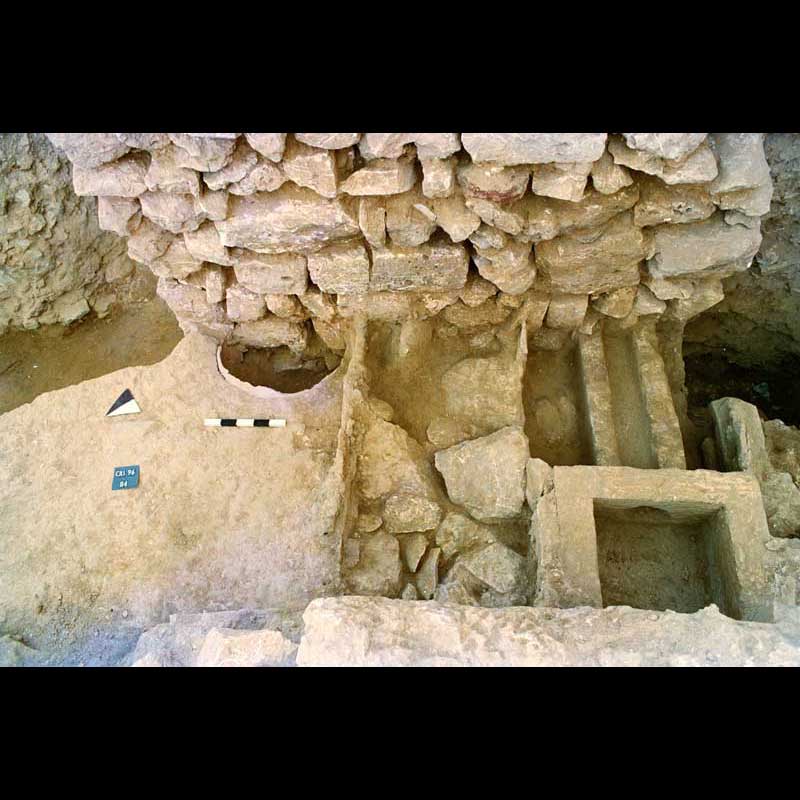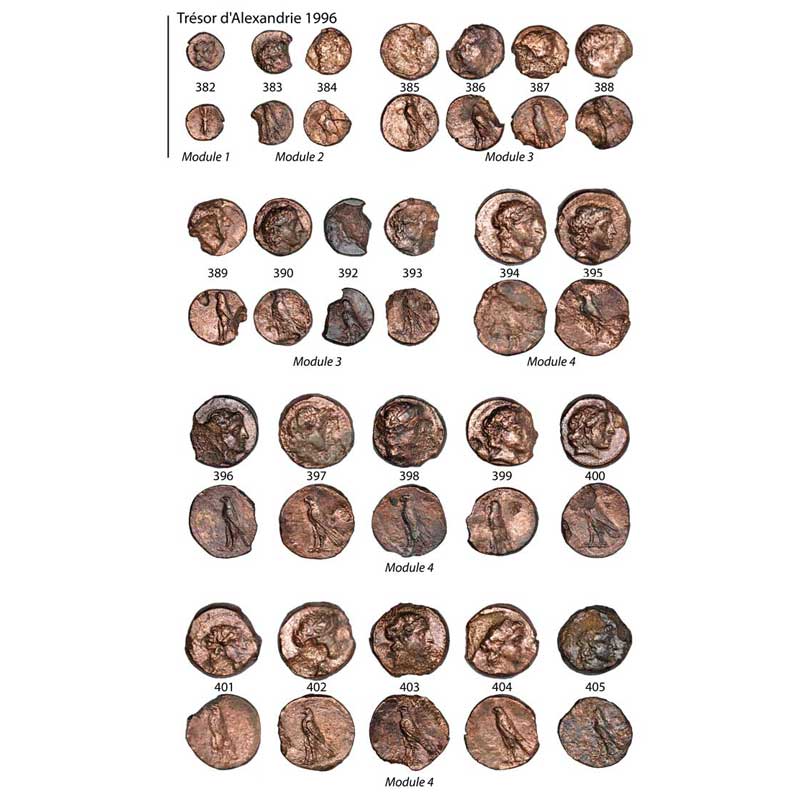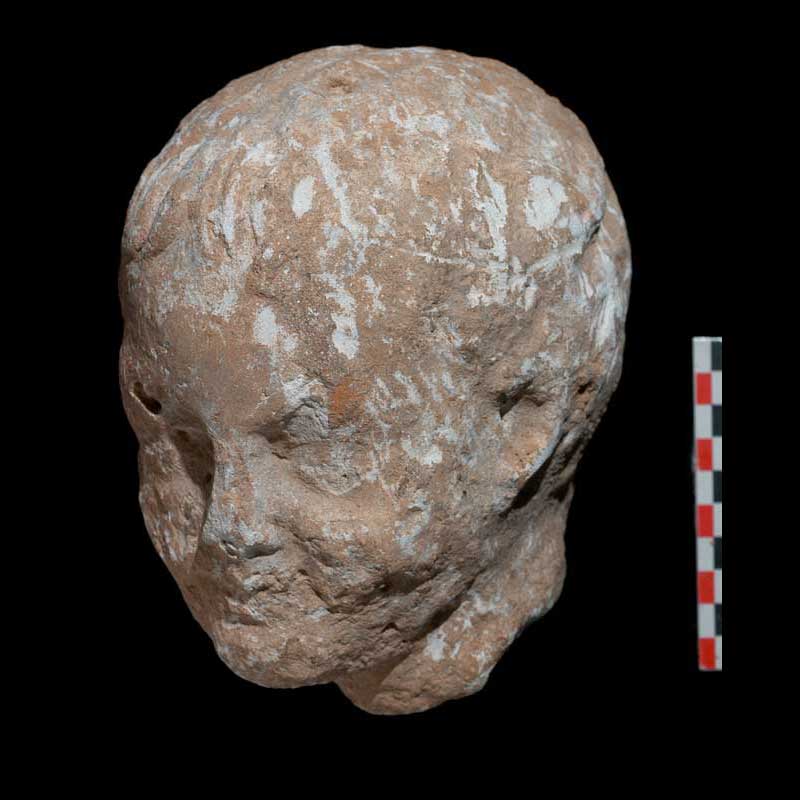The Cricket Ground
Team leader : Hélène Silhouette
The Cricket Ground site was excavated by several CEAlex teams between 1994 and 1997 on land that had been largely gutted by the construction of a building for El-Miri Hospital. At the lowest level of the modern excavation, concrete columns almost 1 m in diameter were sunk, causing varying degrees of damage to the structures dating from the Early Hellenistic Period and almost completely depriving us of structures dating from after 200 BC.
Three phases of occupation were identified. Housing was installed on the slopes of the hill, with occupation levels dating from the end of the 4th century and the beginning of the 2nd century BC. The foundations of the walls were dug down to the natural soil. Some traces of signinum flooring indicate that these houses were well built, although the remains that have survived are sparse.
At the beginning of the 3rd century BC, levelling work combined with the transformation of a cul-de-sac into an east/west street with a sewer, and the creation of a north/south alleyway, destroyed part of this occupation. Four plots occupied the site. Two houses were built to the north of the street; a third house was served by the small alleyway running perpendicular to the east; only part of the fourth house was uncovered to the north-west of the excavated site. The two houses on the south side of the street were separated by a crawl space containing a pipe for draining waste water to the street. The front wall of the south-western house was monumental, built of rectangular blocks. The interior walls of both houses were plastered with a fine white mortar; traces of signinum flooring were found in the rooms, but the floors are mainly made of sand or hard-packed earth.
In the middle of the 3rd century BC, redevelopment led to the redistribution of the spaces into three houses, each equipped with a water source, wells leading to subterranean water collection tunnels, cisterns and basins for rainwater collection. The two houses opening onto the southern street had a workshop and/or shop; the house to the north had a large room with a red-painted floor. It was partly destroyed by fire. An exceptional decorative ensemble was found in this house. It consists of small stucco and ceramic fish covered in gold leaf that would have decorated a piece of furniture. This house also held a hoard of coins, which have turned out to be unknown to numismatists. Despite the differences in the salvage conditions, this excavation has yielded a series of closed deposits that have made it possible to reliably trace the evolution of ceramic production and consumption in Alexandria from the end of the 4th century to the end of the 1st century BC, and has revealed extremely rare examples of Alexandrian dwellings from the Early Hellenistic Period.
Further reading:
S. Dubourg, « L’architecture des riches demeures d’Alexandrie », in M.-D. Nenna (éd.), Alexandrie grecque, romaine et égyptienne, Dossiers d’Archéologie 374, mars/avril 2016, p. 26-29.
A.-M. Guimier-Sorbets, « Quelques poissons dorés : un décor d’appliques du mobilier alexandrin », in J.-Y. Empereur (éd.), Alexandrina 3, Études Alexandrines 18, Le Caire, 2009, p. 343-372.
A.-M. Guimier-Sorbets, « Chantier du Cricket Ground (Alexandrie). Le geste des mosaïstes : éléments préfabriqués dans un nouveau pavement alexandrin », in M.-D. Nenna (éd.), Alexandrina 5, Études Alexandrines 50, 2020.
C. Harlaut, J.W. Hayes, Pottery in Hellenistic Alexandria, Études Alexandrines 45, Alexandrie, 2018.
J.W. Hayes, C. Harlaut, « Ptolemaic and Roman Pottery deposits from Alexandria : I » avec en annexe les lampes par C. Georges, in J.-Y. Empereur (éd.), Alexandrina 2, Études Alexandrines 2, Le Caire, p. 99-138.
O. Picard, « Un monnayage alexandrin énigmatique : Le trésor d’Alexandrie 1996 », in Mélanges Le Rider, Paris, 1999, p. 313-321.
Fr. Queyrel, « Le garçon du Cricket et les enfants d’Alexandrie », in J.-Y. Empereur (éd.), Alexandrina 4, Études Alexandrines 32, Alexandrie, 2014, p. 131-161.
H. Silhouette, « Le Cricket Ground : approvisionnement en eau d’un quartier gréco-romain d’Alexandrie », in I. Hairy (éd.), Du Nil à Alexandrie : Histoires d’eaux, Catalogue d’exposition, Le Mans, Alexandrie, 2011, p. 364-377.
H. Silhouette, « Les maisons hellénistiques du Cricket Ground », in M.-D. Nenna (éd.), Alexandrie grecque, romaine et égyptienne, Dossiers d’Archéologie 374, mars/avril 2016, p. 30-31.

